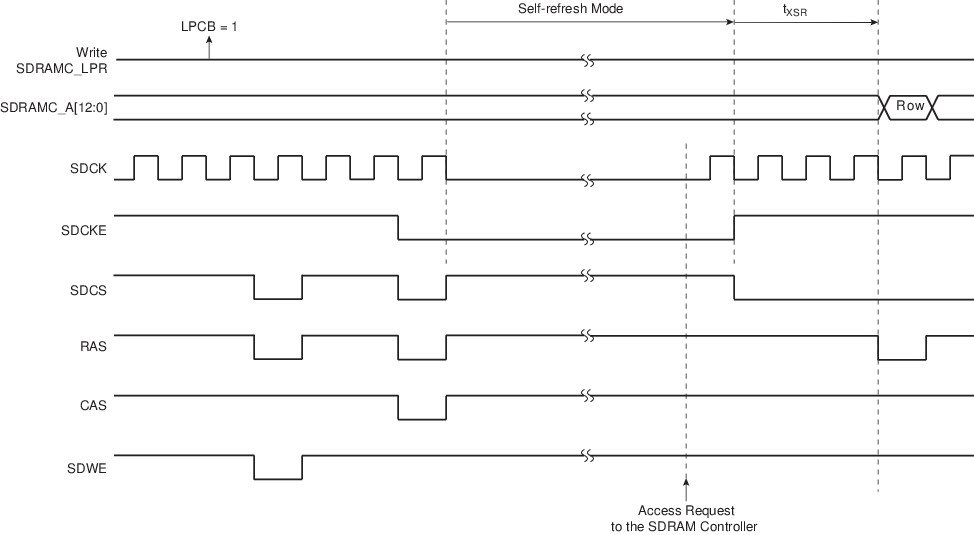This mode is selected by configuring SDRAMC_LPR.LPCB to 1. In Self-refresh mode, the SDRAM device retains data without external clocking and provides its own internal clocking, thus performing its own autorefresh cycles. All the inputs to the SDRAM device become “don’t care” except SDCKE, which remains low. As soon as the SDRAM device is selected, the SDRAMC provides a sequence of commands and exits Self-refresh mode.
Some low-power SDRAMs (e.g., mobile SDRAM) can refresh only one-quarter or a half quarter or all banks of the SDRAM array. This feature reduces the self-refresh current. To configure this feature, Temperature Compensated Self-Refresh (TCSR), Partial Array Self-Refresh (PASR) and Drive Strength (DS) must be set in the SDRAMC_LPR and transmitted to the low-power SDRAM during initialization.
After initialization, as soon as the PASR/DS/TCSR fields are modified and Self-refresh mode is activated, the Extended Mode register is accessed automatically and the PASR/DS/TCSR bits are updated before entry into Self-refresh mode. This feature is not supported when SDRAMC shares an external bus with another controller.
The SDRAM device must remain in Self-refresh mode for a minimum period of tRAS and may remain in Self-refresh mode for an indefinite period. Refer to the following figure.
